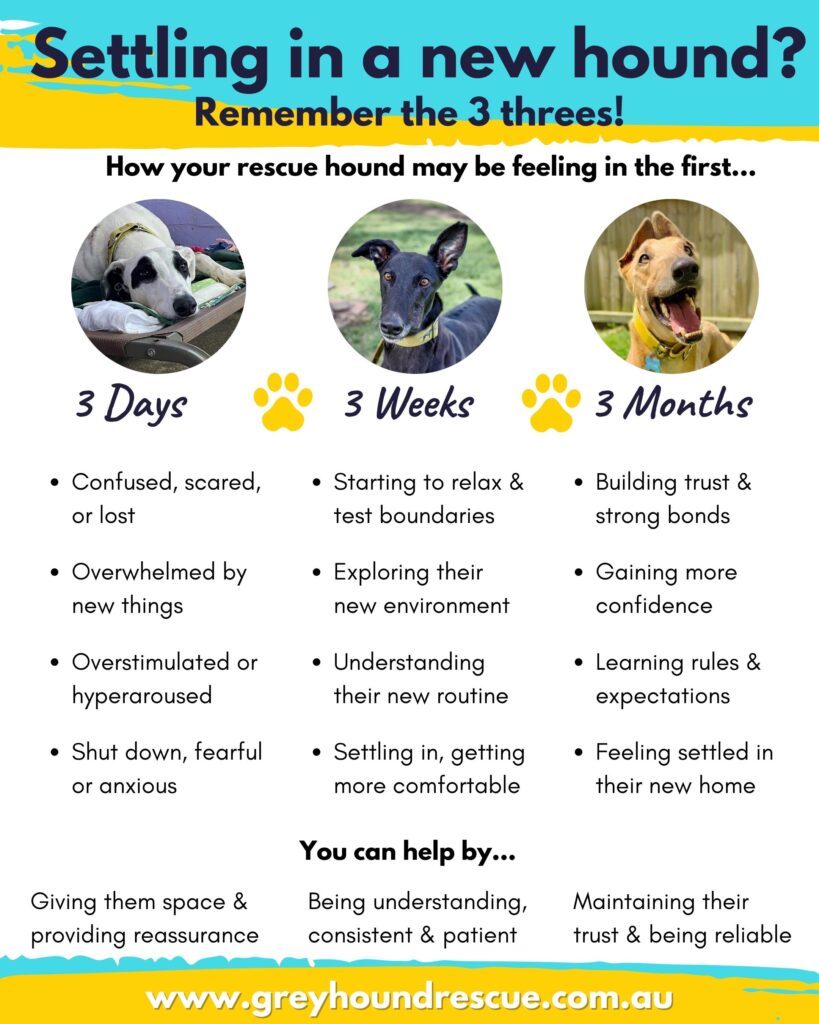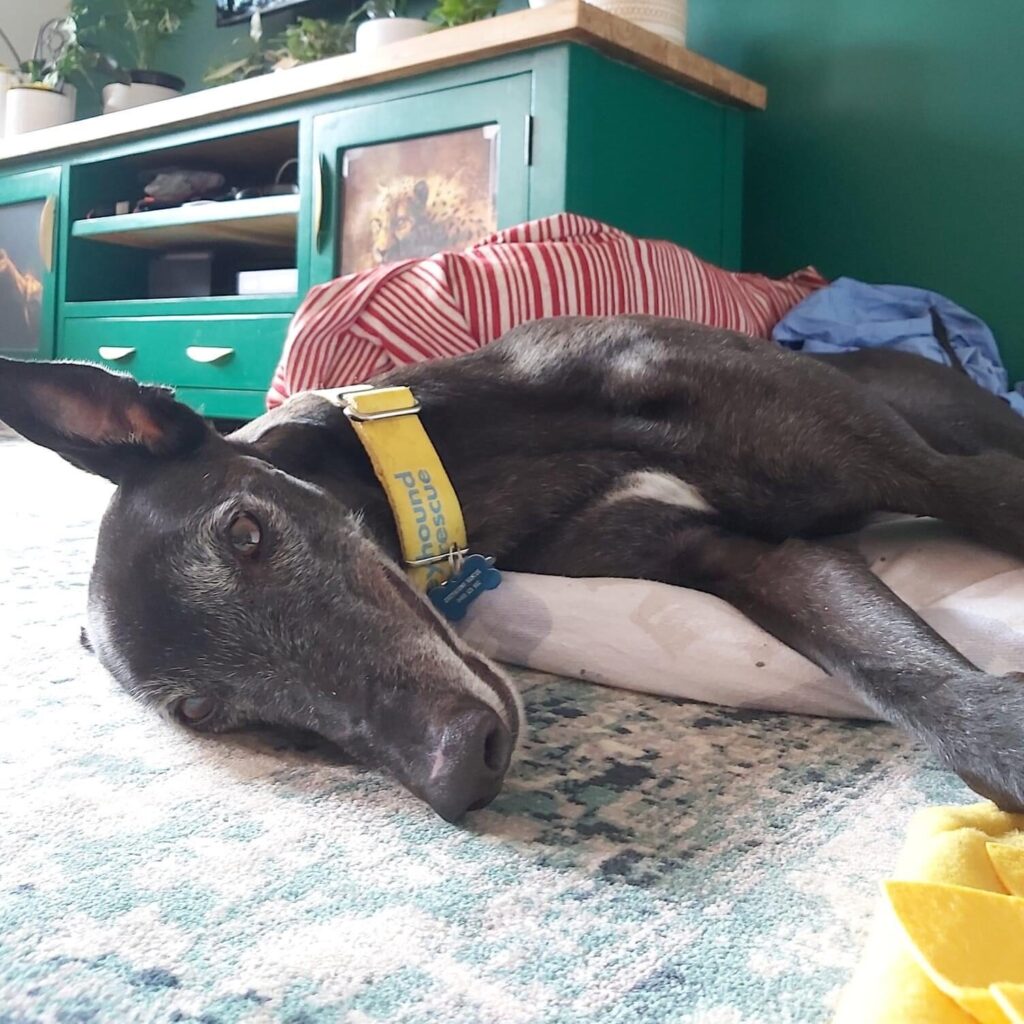Imagine yourself waking up in a strange place. You don’t know where you are, who the people around you are or what anything is. Nothing smells or sounds familiar, and your belongings are all different. Everything you find comforting is gone. Scary, huh?
Well, that’s the reality for our Kennel Kids when they first go on trial in a home. Those first few weeks are going to be incredibly stressful for them. Some hounds might adapt quicker than others, but it’s important to give them space and time to settle no matter how confident they seem. There’s a lot to learn for both you and your Kennel Kid!
You may have heard about the three threes. If not, it’s a great way to understand what your greyhound may be feeling in those first three days, first three weeks and first three months.

Here is some of what you can expect:
The first day:
The first day will be exciting, but stressful! We encourage you to head straight home, taking them to their toilet spot straight away. Be aware that they may not want to toilet at this early stage, or even eat. By now you should have prepared a designated safe space for them away from any walkways or busy spaces. Make this space known to them. And of course, make sure you’re always practising the consent test.

Please don’t be disappointed if your hound doesn’t immediately come to you. It’s a big change from what they know. They’ll appreciate you respecting their space and will approach you in their own time.
You may also notice they seem unsettled, panting and pacing. This is extremely normal behaviour. It is a sign that they are feeling overwhelmed, and you will find your hound will soon settle. Remember that it is not them asking to go for a walk, this will add to the anxiousness they are feeling. Go about your normal routine, and you’ll probably find them in roach position before long!
We’ve put together some great first day tips here. You can read through the benefits of providing time to explore, and you’ll find some great toilet and general training tips. We’ve also put together some great strategies for when you have kids at home. Implement these to ensure a safe and enjoyable relationship from the word go.
The first three days:
When we speak to potential adopters, we stress the importance of keeping your hound’s world small. This is true for the first three days and the first few weeks. New things will be overwhelming at this stage, and your hound may be easily stimulated and quick to become fearful and anxious. This is why we recommend waiting for walks until two weeks have passed. It will be a far more enjoyable experience for them when they have had time to decompress and process their new surroundings.
Three weeks in:
By this time, your hound will be realising that this might be his forever home! Thanks to your patience and understanding, your hound will be starting to relax. They will be learning the routine, which will have helped them to feel comfortable in their new space. Hopefully you’ve started to feel a little more comfortable too.
However, this period is also the time when behaviour issues may start to become known. This could be anything from separation anxiety as you start to teach your hound to be alone, to counter surfing or resource guarding. If you do notice any of these issues, please get in touch with your adoption coordinator. They will be able to recommend the next best steps.

You may also notice your hound is starting to freeze on walks. This is not them being stubborn, it’s a fear response. Forcing them forward may make walks scarier for them in the future, so it’s important you go at their pace. And take lots of yummy treats with you! We’ve explained how to work through this in more detail here.
Pay attention to what your hound is telling you. This hound had stopped walking and tucked his tail between his legs, two signs he was feeling overwhelmed.
At three months:
By the time you reach three months, you and your hound should be enjoying each other’s company. They have placed their trust in you, and they are learning the rules and expectations. Keep up the great work and maintain your routine. It’s also a great time to start training. For example, you could try teaching ‘stay’ using reward based training. Continue to develop the bond formed between you and you will have yourself a greyt companion.

Remember that no two hounds are the same. While the above is a great guide, your hound may move at a different pace. Always trust your instincts and pay attention to their communication signals. And make sure you go easy on yourself!
You may find yourself with a case of the post adoption blues, but we promise before you know it things will be better. If at any time you need advice, your adoption coordinator is always available to get in touch with.
For more training tips and tricks, you can head here. You’ll find some great resources to assist you during this early stage.

